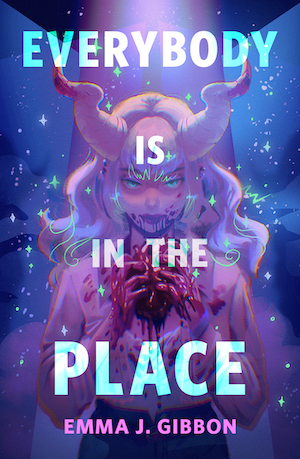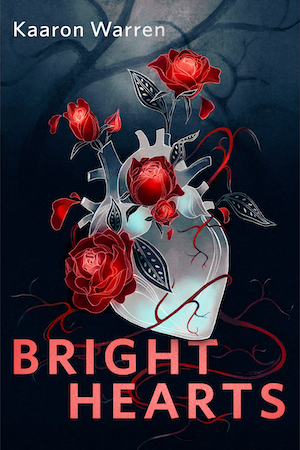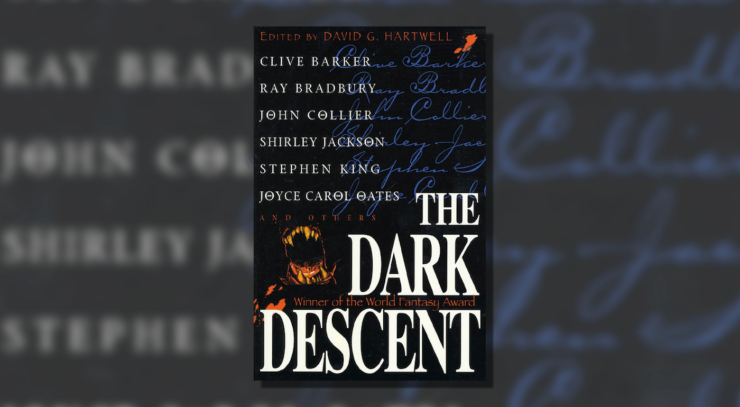Welcome back to Dissecting The Dark Descent, where we lovingly delve into the guts of David Hartwell’s seminal 1987 anthology story by story, and in the process, explore the underpinnings of a genre we all love. For a more in-depth introduction, here’s the intro post.
Of all the authors David Hartwell includes in the deconstructive-gothic groove he hits this section, William Faulkner is one of the more essential. A foundational author in American gothic along with such names as McCarthy and Jackson, Faulkner’s stands out as a significant literary figure. His unconventional style and wild experimentation (As I Lay Dying and The Sound and the Fury being shining examples) are distinctive even among chroniclers of the grotesque and gothic, despite his work being unfortunately and uncomfortably mired in its historical and geographical origins. “A Rose for Emily” is an example of both the experimentation and Faulkner’s flair for the gothic, depicting a local eccentric surrounded by gothic tropes, but contextualizing them both in her hometown’s one-sided, parasocial relationship with the titular Emily Grierson, and the march of time and progress around a woman who stubbornly and vehemently remains herself even as those twin forces erode away at her existence.
Emily Grierson is dead. Upon the occasion of her death, the small Southern town where she lived reminisces about the reclusive Emily, a woman who kept to herself and mostly interacted with the outside world through her Black house servant. As the narrator (who refers to themself as “we”) reminisces on Emily, the facts only grow stranger, beginning with the detail that she never paid her property taxes and continuing with the way she remained in denial of her father’s death for several days and the disappearance of her one-time paramour, Homer. As the recollections continue, more unanswered questions arise—what was that weird smell on her property? Why did she need all that arsenic? And most curiously, what occupies the closed-off upper floor of her house?
For all the town concerns themselves with Emily, few seem to care about her. She’s an inconvenience, a local fascination, and someone to be speculated about. It’s clear from the story that she doesn’t want to have anything to do with the townsfolk. She sees their presence on her property as equally inconvenient. This doesn’t stop them from trespassing on her property to spread quicklime around her house, barging in on her to force a proper funeral for her father, and constantly showing up to demand she pay taxes that she doesn’t owe. Not a single person in the town treats her as a human being, instead claiming they have a “duty of care” she didn’t ask for and clearly doesn’t want. It’s a kind of parasociality one only finds in small towns—when someone has suffered a loss or is otherwise hurting, there will always be neighbors drawn to trauma and tragedy, eager to engage in baseless speculation and willing to pry out of “concern” for others, divorced from any actual concern.
In the case of Emily Grierson, the idea that she’s alone in a house with a Black servant also engages the town’s sexism and racism. Because she’s a woman alone, they proceed to offer her help she doesn’t need and wonder what she’s doing all day when she’s not teaching china-painting classes. When the smell emanates from her house, their first thought is that it’s an animal that her Black servant killed in the yard. No one bothers to get to know Emily, they just immediately indulge in various assumptions, based on her position and standing in the community. Since she rarely leaves her house (only doing so once during the story), the town tends to just fill in the blanks on their own and act accordingly. This includes automatically assuming she married the dashing but unnerving Homer (who bears a striking resemblance to her father), messing with her cousins when they come to town to keep them away from Emily, and saying nothing when she buys a large quantity of arsenic. She’s a local curiosity, a rich source of speculation—they entertain one another with stories about the strange woman who lives by herself, as well as her family and her father.
It’s difficult not to see Emily’s eccentricities as a function of this morbid interest in her life—she vehemently denies her father is dead so the townsfolk don’t try to call on her and perform the duties a man normally would. She makes sure she’s seen with Homer because even though he’s a lout and about as vile as her father, he’s a man and his presence gets them to back off, at least for a while. They complain about the smell, she digs in until they eventually sow lime all over her backyard. Everything she does is stubbornly and entirely in the interest of keeping to herself. None of them know her, or even want to, and so because they alienate her, she isolates herself. That isolation and lack of stimulus, much like in “The Yellow Wallpaper,” eats her brain alive. In the end, it drives her to necrophilia—she’s had to keep up the pretense for so long and has so few people or sources of comfort or connection in her life that she lies down every night next to Homer’s corpse as if he were still alive.
Eventually, all that’s left of Emily are the unnerving stories about her and the persistent rumors. The town’s parasocial relationship turns her into a figure from a gothic narrative, someone gossiped about and whispered about more than engaged with. By the time the story begins, Emily Grierson has died and only the rampant speculation and brief interactions with her remain. Emily and her father are also artifacts of a past being gradually left behind. Her father’s funeral is attended by men who dress in their Confederate Army uniforms, driving the point home that he was part of the older and twisted legacy of the South. Her first appearance as an unnerving and somewhat grotesque figure has her arguing that she doesn’t have to pay a tax bill and that if they want to argue with her, they can take it up with Colonel Sartoris—a man who at that point has been dead for a decade. Part of the reason that only the stories remain is that those who knew the Griersons outside the parasocial relationship are mostly gone. As more of the people who knew Emily die off or leave, eventually the townspeople have only the gossip and rumors to rely on, leaving behind the legacy of a strange old woman who lived all alone with only a single servant and curled up to the corpse of her dead boyfriend every evening until she could no longer make it up the stairs.
Faulkner’s focus on both the temporal and parasocial nature of the stories around Emily turns a stock gothic trope about an old dark house and a tragic, isolated woman into something altogether more interesting and disturbing. While “The Yellow Wallpaper” indicted gothic fiction and society by humanizing the madwoman in the attic and forcing the audience to watch her mind consume itself in her enforced solitary confinement, Faulkner’s version indicts the people surrounding Emily and the temporal forces that warp and twist a community’s perception into her eventual transformation. The entire town is complicit in the creation of Emily Grierson, both with their inaction (those who did know Emily kept to themselves for the most part) and their actions (the repeated parasocial meddling). Both the things the townspeople gossip about and the things omitted from Emily’s history create a more complex portrait, building a strange gothic story into something altogether more by showing how the tale was shaped by the social environment around it.
And now to turn it over to you. Do you think Faulkner predicted our mass preoccupation with parasocial relationships in the age of social media and celebrity/internet culture? When it comes to gothic deconstruction, is the “secret ingredient” in works like this and “The Yellow Wallpaper” a pronounced focus on the psychological effects of these tropes? And what’s your personal favorite work of Faulkner’s?
Please join us in two weeks for “How Love Came to Professor Guildea” by Robert Hichens.










